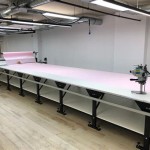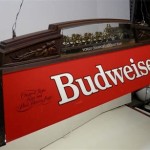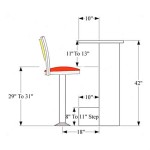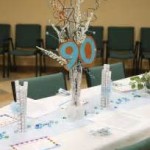The Enduring Appeal of Vintage Cast Iron Table Bases
Vintage cast iron table bases represent a significant piece of industrial and design history. Their durability, aesthetic character, and versatility have cemented their place in both residential and commercial spaces. These bases, often salvaged from old factories, schools, or restaurants, offer a robust and stylish foundation for a variety of table tops, contributing a unique blend of functionality and visual appeal to any interior.
The origins of cast iron table bases can be traced back to the 19th century, a period of rapid industrialization and technological advancement. The ability to mass-produce intricate designs using cast iron made it a popular material for furniture manufacturing. These bases were initially favored for their strength and stability, essential requirements for tables in bustling commercial environments. The inherent weight of cast iron also contributed to their stability, preventing tables from easily tipping over, a desirable characteristic for both public and private settings. The use of cast iron provided a pragmatic solution for creating furniture capable of withstanding heavy use and enduring for extended periods.
The visual appeal of vintage cast iron table bases lies in their distinctive designs. Manufacturers employed a variety of decorative motifs, including floral patterns, geometric shapes, and architectural details. These embellishments differentiated them from purely utilitarian furniture options. The casting process allowed for the reproduction of intricate details, resulting in bases that were often works of art in themselves. This attention to design elevated these pieces beyond mere functional supports, transforming them into integral elements of the overall aesthetic of the table.
The material itself lends a certain character to these pieces. With age, cast iron develops a unique patina, a surface finish that arises through oxidation and weathering. This patina often reveals subtle variations in color and texture, adding depth and visual interest to the base. The presence of rust, while potentially a structural concern if left unaddressed, is often considered part of the base's charm, a visual reminder of its history and longevity. Preserving the patina, or carefully restoring it, is a common practice among those who appreciate the vintage aesthetic.
Key Point 1: The Durability and Stability of Cast Iron
The inherent strength of cast iron is a primary reason for its enduring popularity in table base construction. Cast iron's dense structure and robust composition make it highly resistant to bending, breaking, and deformation. This durability ensures that the table base can support substantial weight without compromising its structural integrity. Commercial environments, where tables are subjected to frequent use and potential abuse, benefit significantly from the resilience of cast iron.
Beyond its strength, cast iron also offers exceptional stability. The weight of the material provides a low center of gravity, which helps prevent the table from wobbling or tipping over, even when subjected to uneven weight distribution or accidental bumps. This stability is particularly important in settings where safety is a concern, such as restaurants, bars, and schools. The combination of strength and stability makes vintage cast iron table bases a reliable and long-lasting foundation for any table top.
The longevity of cast iron is a testament to its durability. Many vintage bases have survived for decades, if not centuries, continuing to provide reliable support. This extended lifespan makes them a sustainable choice for furniture, reducing the need for frequent replacements and minimizing environmental impact. The ability to withstand the test of time is a key characteristic that distinguishes vintage cast iron table bases from more modern, less durable alternatives.
Proper maintenance can further extend the lifespan of cast iron table bases. Regular cleaning and occasional rust treatment can help prevent corrosion and maintain the structural integrity of the material. While rust is a natural process that occurs with iron, it can be managed to prevent it from compromising the base's strength. With proper care, vintage cast iron table bases can continue to provide reliable support for generations to come.
Key Point 2: The Aesthetic Versatility of Vintage Designs
Vintage cast iron table bases exhibit a remarkable versatility in terms of design. From ornate Victorian-era patterns to simpler, more industrial styles, there is a wide variety of designs to choose from. This diversity allows for seamless integration with a range of interior design aesthetics, from traditional to contemporary.
The decorative motifs found on vintage cast iron bases often reflect the design trends of their respective eras. Some bases feature intricate floral patterns that evoke a sense of elegance and sophistication, while others display geometric shapes that align with Art Deco or Mid-Century Modern styles. The style reflects the manufacturer's understanding of the desired trends.
The inherent aesthetic of cast iron, with its textured surface and distinctive patina, lends itself well to various design schemes. It can be seamlessly incorporated into farmhouse settings or be employed for industrial themes. The raw, industrial aesthetic of cast iron adds a touch of authenticity to any space. The weathered appearance of the material contributes to a sense of history and character.
The ability to pair vintage cast iron table bases with different table top materials further enhances their versatility. They can be combined with wood, glass, stone, or metal, allowing for endless design possibilities. A wooden top can create a rustic and inviting feel, while a glass top can add a touch of modernity and transparency. The adaptability of cast iron bases makes them a valuable asset for interior designers and homeowners alike.
Key Point 3: The Sustainability Aspect of Reclaimed Pieces
Choosing vintage cast iron table bases is an environmentally conscious decision. By opting for reclaimed pieces, individuals and businesses can reduce their environmental footprint and contribute to a more sustainable future. Reusing existing materials helps conserve natural resources and minimizes the energy required for manufacturing new products.
The process of manufacturing new cast iron involves the extraction of raw materials, the smelting of iron ore, and the casting and finishing of the final product. Each of these steps consumes energy and generates waste. By reusing vintage bases, these environmental impacts are avoided. Reclaimed materials typically need cleaning and refinishing, which are typically far less energy intensive than creating new products.
The durability of cast iron also contributes to its sustainability. Since vintage bases are built to last, they have a longer lifespan than many modern alternatives. This reduces the need for frequent replacements, which further minimizes environmental impact. Investing in high quality, durable furniture is a long-term sustainable strategy.
The reuse of vintage cast iron table bases also helps reduce landfill waste. Furniture is a significant source of waste, and much of it ends up in landfills. By reclaiming and repurposing old bases, we can divert them from landfills and extend their useful life. This helps conserve valuable landfill space and reduces the environmental problems associated with waste disposal.
The sourcing of vintage cast iron table bases is an important consideration. Working with reputable dealers who prioritize ethical and sustainable practices can ensure that the reclamation process is environmentally responsible. Dealers who take steps to minimize their own environmental impact contribute to the overall sustainability of the vintage furniture market.
In conclusion, the appeal of vintage cast iron table bases extends beyond their aesthetic charm and structural strength. Their durability, versatile designs, and sustainability make them a valuable addition to any space. These pieces offer a tangible connection to the past, combining function with character and environmental consciousness.

Decorative Cast Iron Table Bases B8c4

16 5 Tall Cast Iron Bench Coffee Table Legs 2 Pack Industrial Embossed Rustic Cincinnati Live Edge Reclaimed Bases Wood Granite

Cast Iron Pedestal Table Base Short Restaurant

28 Cast Iron Dining Table Base In Rustic Chrome With Plymouth Mass Embossment Trestle Jcs Casting Company Bases Legs

28 Dining Table Desk Height Industrial Cast Iron Legs Base Los Angeles

Cast Iron Dining Table Legs Vintage Base

Antique Cast Iron Table Bases Set Of 2 For At Pamono

29 Cast Iron Dining Table Base In Black With Jcs Embossment Legs 2 Pack Casting Company Bases

Ace Reclamation Supplying Architectural Salvage Reclaimed Building Materials Railway Sleepers New And Used Scaffold Boards Antique Furniture Vintage Interiors In The Worldwide

Antique Victorian Cast Iron Pedestal Base Paw Foot Coffee Side Table At 1stdibs Vintage
Related Posts








